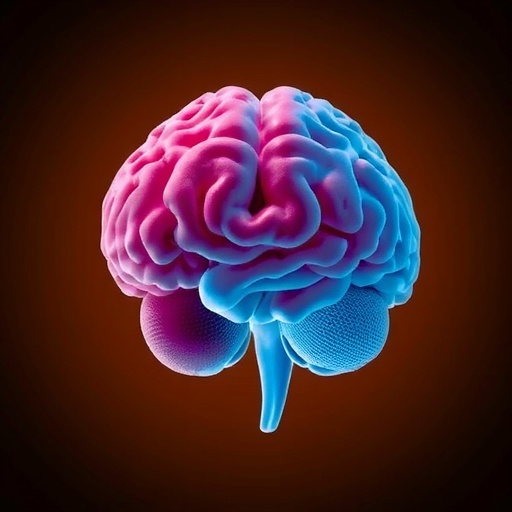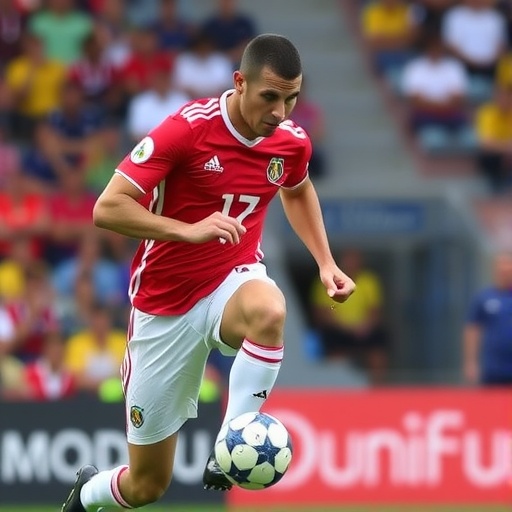New Research Unveils Early Brain Damage in Young Athletes Before CTE Diagnosis
A groundbreaking study spearheaded by researchers at Boston University’s Chobanian & Avedisian School of Medicine has revealed startling evidence that neurodegeneration begins significantly earlier in young athletes exposed to repetitive head impacts than previously understood. Published in the prestigious journal Nature, this study challenges long-standing assumptions about the onset of chronic traumatic encephalopathy (CTE), a progressive neurodegenerative disease historically diagnosed only post-mortem. The findings indicate that brain injury manifests well before the pathological hallmarks of CTE appear, a discovery that may transform how contact sports are perceived and managed worldwide.
Chronic traumatic encephalopathy has long been associated with repeated concussions and head trauma, particularly in contact sports such as American football, soccer, and ice hockey, as well as among military personnel exposed to blast injuries. Until now, definitive diagnosis has relied on post-mortem neuropathological examination, limiting early detection and intervention. This new research addresses critical gaps by identifying cellular and molecular brain alterations in living subjects who sustained repetitive head impacts yet do not meet the full criteria for CTE.
The investigative team utilized single nucleus RNA sequencing—a cutting-edge technique that profiles gene expression at the resolution of individual cells—to scrutinize frozen brain tissue obtained from 28 male individuals aged between 25 and 51 years. These subjects were segregated into three cohorts: a control group with no history of contact sports or repetitive head trauma, an RHI (repetitive head impact) group of former athletes without clinical or pathological evidence of CTE, and a CTE cohort with confirmed early-stage disease. This approach allowed for unparalleled insight into cellular processes and pathological changes at an unprecedented level of detail.
One of the most remarkable revelations was a profound 56% reduction in neuronal populations localized specifically to the sulcal depths of the cerebral cortex. These regions are biomechanically vulnerable, experiencing the greatest shear forces during impacts, and notably represent the initial sites where CTE pathology emerges. Crucially, neuron loss at these anatomical loci was observed not only in individuals exhibiting CTE pathology but also in those exposed to repetitive head trauma without manifesting full disease, highlighting that neuronal degeneration precedes conventional CTE diagnosis.
In addition to neuronal loss, the study uncovered significant vascular injury and neuroinflammation across both athlete groups, underscoring that the repercussions of repetitive head trauma extend beyond the classical framework of CTE. Inflammation was characterized by glial cell activation and molecular signatures indicative of immune system engagement, while vascular perturbations involved disruptions to the blood-brain barrier and microvascular integrity. These alterations suggest a sustained detrimental cascade initiated by sub-concussive impacts, long before overt neurodegeneration sets in.
Jonathan Cherry, PhD, assistant professor of pathology and laboratory medicine at BU and director of the digital pathology core at the university’s CTE Center, emphasized the clinical implications: “Our data suggest that repeated subconcussive impacts cause lasting brain injury by mechanisms separate from, but potentially additive to, the traditional pathogenesis of CTE. This challenges the notion that brain health is preserved in young athletes merely because they lack diagnosed CTE.” He added that these insights necessitate a reevaluation of protective measures in youth and professional sports.
Complementing these findings, senior author Ann McKee, MD, director of the BU CTE Center and William Fairfield Warren Distinguished Professor of Neurology and Pathology, stressed the urgent need for policy reform: “This research underscores the imperative to reduce head impacts at all levels of sport. Our data confirm that brain injury is not confined to concussions alone but includes the much more frequent non-concussive hits sustained during athletic play. Prioritizing safety protocols could mitigate these early neurodegenerative processes.”
The study’s methodological rigor was reinforced through validation in larger sample sets and cross-comparisons with existing literature on neuropathological effects of head trauma in athletes and military personnel. By combining high-throughput molecular biology techniques with sophisticated neuropathological analysis, this work advances the understanding of early brain injury mechanisms related to repetitive head impacts, offering potential biomarkers for earlier detection and therapeutic targeting.
From a mechanistic standpoint, the loss of neurons at sulcal depths likely arises from localized biomechanical strain leading to axonal damage, synaptic dysfunction, and subsequent inflammatory responses. The disruption to cerebrovascular integrity exacerbates neuronal vulnerability by impairing metabolic support and facilitating neuroinflammation. Together, these intertwined pathological processes may set the stage for progressive, irreversible brain injury if left unchecked.
Importantly, these findings pave the way for novel clinical interventions aimed at halting or reversing early brain injury before CTE fully develops. Emerging therapeutic avenues might involve anti-inflammatory strategies, vascular protection, and neuroregenerative approaches tailored to the unique cellular environment revealed by single nucleus RNA sequencing. Moreover, reliable in vivo biomarkers derived from these molecular signatures may facilitate early diagnosis and enable monitoring of treatment efficacy.
This study not only reframes our understanding of brain health risks associated with contact sports but also calls for a paradigm shift toward preemptive action. Enhanced neuroprotective equipment, modified rules to limit head impacts, and improved awareness of sub-concussive injury consequences are crucial in safeguarding the neurological well-being of athletes across all competitive levels.
As millions of individuals worldwide engage in contact sports, disseminating these insights broadly is imperative. Stakeholders including coaches, athletic trainers, healthcare providers, and policymakers must integrate evolving scientific evidence to forge safer sporting environments. In shaping future research priorities, this work firmly establishes the importance of uncovering the earliest molecular and cellular indicators of brain injury.
In summary, this landmark research from Boston University reveals that significant neuronal loss, inflammation, and vascular dysfunction occur in young athletes exposed to repetitive head impacts even before traditional pathological signs of CTE arise. These revelations challenge established paradigms, urging immediate reappraisal of contact sports safety and catalyzing innovative strategies for early detection, prevention, and treatment of brain injury arising from repetitive head trauma.
Subject of Research: Cells
Article Title: Repeated head trauma causes neuron loss and inflammation in young athletes
News Publication Date: 17-Sep-2025
Web References: https://doi.org/10.1038/s41586-025-09534-6
References: Not explicitly provided in the source material
Image Credits: Not provided
Keywords: Diseases and disorders
Tags: Boston University research on brain injurychronic traumatic encephalopathy onsetcontact sports and brain healthearly detection of brain injuryearly signs of CTEimpact of repetitive head traumaimplications for youth sports safetylong-term effects of concussionsmanaging head trauma in athletesmolecular changes in brain cellsneurodegeneration in young athletessingle nucleus RNA sequencing in neuroscience





